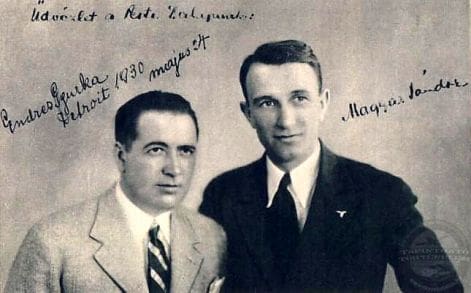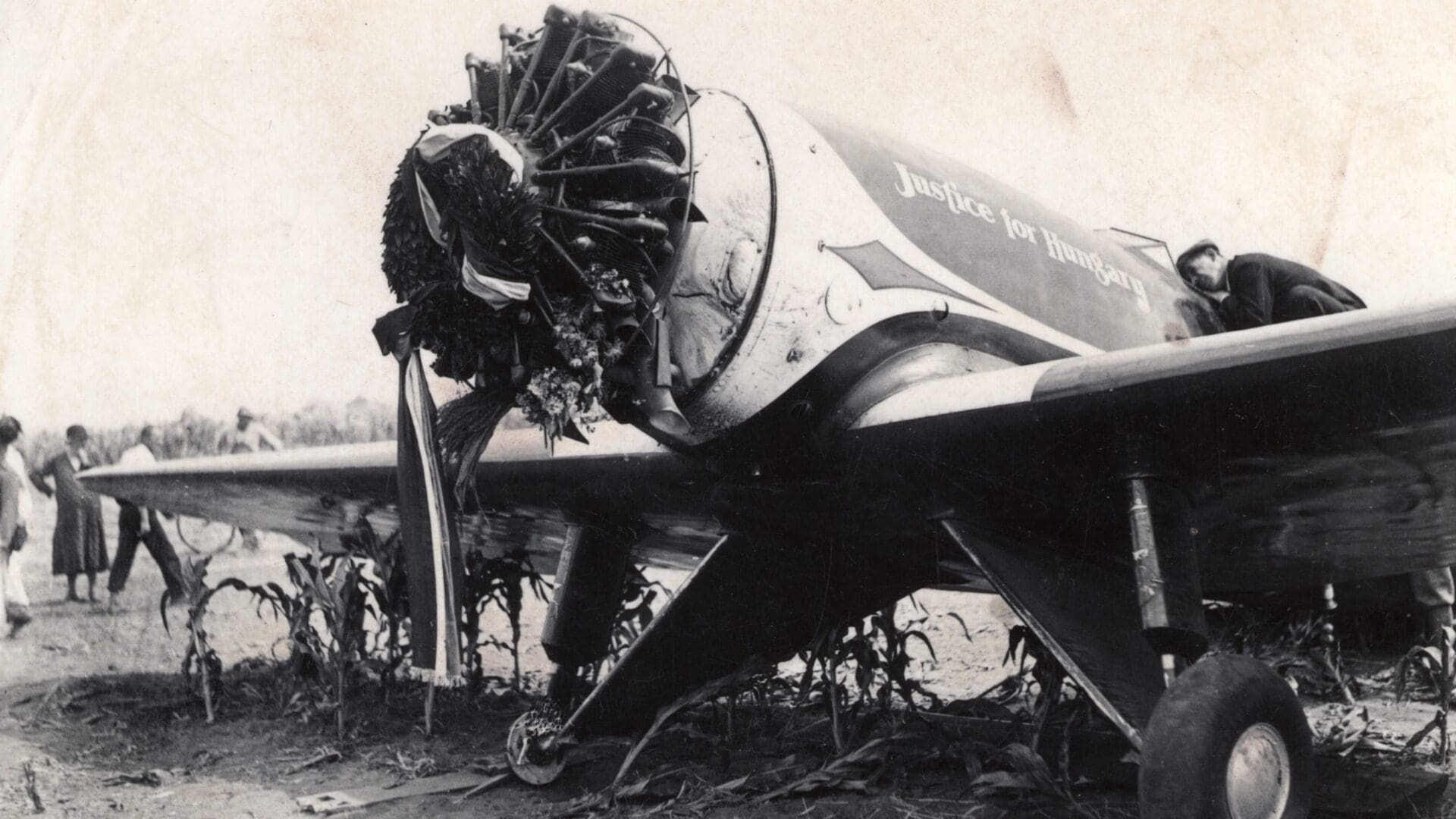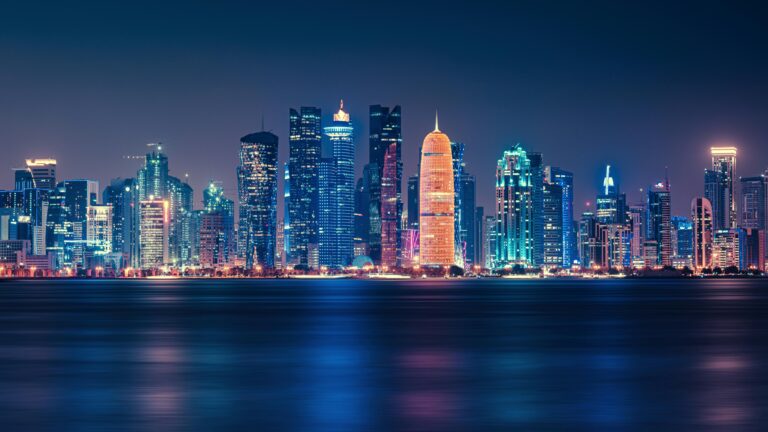In 1931, exactly 92 years ago, the news of the flight of the Lockheed Sirius 8A Justice for Hungary plane, operated by Hungarian navigator Sándor Magyar and pilot György Endresz, made the headlines all over the world. Defying all odds, which included horrible weather, a jamming compass and the engine of the aircraft breaking down in mid-air, the two heroic Hungarians successfully flew over the Atlantic Ocean from the United States and reached Hungary, breaking several world records during their journey.
However, Hungary suddenly finding itself at the centre of global attention was not only due to the feat of the two prominent aviators, whose unprecedented achievements in terms of flight distance covered and time involved broke at least two world records: 5770 kilometres without landing that were covered in 26 hours and 20 minutes. In addition, they had reached the Irish shores faster than anyone before, and successfully completed the first transatlantic flight whose destination was so deep in the continent.
There was another reason for the sudden interest in the small Central-European country. Although the flight indeed exemplified the power of cooperation, professional expertise, engineering prowess, crystallised and distilled courage, as well as sheer determination and unwavering will,
the main motivation behind this breath-taking enterprise was sincere patriotism and love for Hungary.
György Endresz and Sándor Magyar wanted to attract attention to the unjust Trianon Peace Treaty, as well as create a reason for celebration among Hungarians across all borders—hence the name Justice for Hungary of the aircraft they flew.
Of the two, Magyar was the one who conceived the grand plan of undertaking an ocean flight. His journey as a pilot began in 1916 when he enlisted as a professional lieutenant during World War I. Initially serving in the infantry, he later transitioned to aerial observer in the summer of 1918. He continued to serve in the aerial force even after the war, but eventually the repercussions of the Treaty of Trianon rendered aviation almost non-existent.
After the death of his father, he left Hungary and sought a living overseas. Since the United States had drastically reduced the quota of Eastern European immigrants, he went to Canada, where he first worked menial jobs. Despite the challenging circumstances, Magyar’s passion for aviation persisted, and finally he managed to get back on the plane, working alongside cartographic pilots, and also serving as a postal pilot.
Drawing inspiration from the notable flights over the Atlantic, in particular the renowned solo journey of Lindbergh in 1927 that garnered widespread attention, Magyar realised that
a similar groundbreaking achievement can help the Hungarian cause.
Unfortunately, he could not initially raise sufficient funding for the enterprise that he conceived. The American authorities did not exhibit a particularly favourable attitude towards Magyar’s ambitious plan either. A letter he received from the US aeronautics authority of the time:
’…If you want to make propaganda for your country at all costs, go to the top of the Empire State Building skyscraper. Hang a sign on your back, write: Justice for Hungary, and jump off. I’m sure all the papers will write about the sensation. It is no more unpleasant than drowning and is significantly cheaper…’
The latter sentence alluded to the apparent impossibility of another successful flight over the ocean, as a significant number of aircrafts had crashed into the waters not long before the above correspondence took place.
However, neither the inherent danger of the flight, nor the financial obstacles or the attitude of the authorities discouraged Sándor Magyar. He soon received a letter from his former comrade, György Endresz. Endresz served as a pilot in the World War, was discharged as a first lieutenant, and then participated in the battles in Western Hungary. He was employed by Aeroexpress, while also working as a flight instructor at the Budaörs airport.
In addition, he served at the court of the Afghan king as the monarch’s personal pilot.
Endresz’ innate lust for adventure and his patriotic sentiment made him decide to take part in the enterprise. With donations collected from all around the globe, the flight finally became possible.

After a year of training, at 12:30 p.m. on 15 July, the Justice for Hungary, flown by Endresz and navigated by Magyar, took off from North America’s easternmost point, Harbour Grace, and embarked on a historic flight to Europe. Sándor Magyar was so confident in the success of their journey that before taking off, he sent a telegraph to his mother in Hungary, which said: ‘See you tomorrow afternoon at [the] Mátyásföld [airfield]’. In Hungary, the attention to the Hungarian Americans’ undertaking was immense, and crowds gathered near Mátyásföld long before the arrival of the plane.
However, not everything went as expected: it was a perilous journey that awaited the two men. Almost immediately after takeoff, the compass broke down. Weather conditions also proved to be unfavourable, especially at the later stages of the flight. Thunderstorms blocked their way, and they had to waste the precious fuel to avoid being consumed by the dark and turbulent clouds. Finally, the two heroes managed to find the way to Europe by following the trajectory of ships, using the position of the Sun as a reference point and their maps, and after a while, the route of rivers.
The final challenge came when they had already flown into Hungarian territory. Suddenly, the supply of fuel to the engine was interrupted. They had to make a tough decision—although thousands had already gathered by that time near Mátyásföld, Endresz and Magyar made an emergency landing near Bicske, sadly not managing to cover the last tiny fragment of the journey. The last 30-kilometres of the journey were made in a car, and the pilots arrived to the airfield of Mátyásföld at 9:00 p.m.
The symbolic impact of the flight was immense.
The record-breaking aviators were greeted as national heroes during a grand public celebration held on 20 July 1931 at the Millennium Memorial in Heroes’ Square, where they arrived amidst the jubilation of hundreds of thousands of people. In addition to the enthusiastic public reception, the pilots were warmly welcomed at the Buda Castle as well. There, they had the honour of meeting with the country’s highest officials, including the Prime Minister, the Minister of National Defence, and even Regent Miklós Horthy himself. Other country-wide celebrations soon ensued, and the international impact was also notable.
Justice for Hungary!.jpg
1931. július 15-én, helyi 12 óra 20 perckor a Harlbor Grace repülőteréről felszállt a Justice for Hungary, amely greenwichi idő szerint 6 óra 40 perckor Írországtól délre lépett európai légtérbe, ezzel 13 óra 20 perc menetidővel felállították az óceánrepülés akkori időbeli rekordját.
In addition to acknowledging the efforts of the two pilots, it is crucial to recognise the invaluable contributions made by the numerous individuals who provided financial support for the venture, and without whom it would not have been possible. Notably, Hungarian Americans, Hungarians residing in Hungary and Hungary-sympathisers of foreign origin collectively donated approximately 5,000 dollars. Furthermore,
Lord Rothermere, the chairman of the English Daily Mail newspaper group, made a remarkable contribution by of 10,000 dollars.
Interestingly, it was at his suggestion that the aircraft be named Justice for Hungary. But the most substantial contribution came from Hungarian industrialist Emil Szalay, who had previously established himself in the United States. Szalay’s exceptional generosity went beyond expectations, as he donated over 25 thousand dollars towards the mission.
The audacious flight stands as a testament to the profound love that the Hungarian people hold for their country. Despite changing governments and the passage of time, the heroic deeds accomplished by its sons and daughters will continue to inspire future generations of Hungarians to undertake great endeavours. While perhaps not widely known, the Justice for Hungary flight is unquestionably among the most awe-inspiring ones ever.








